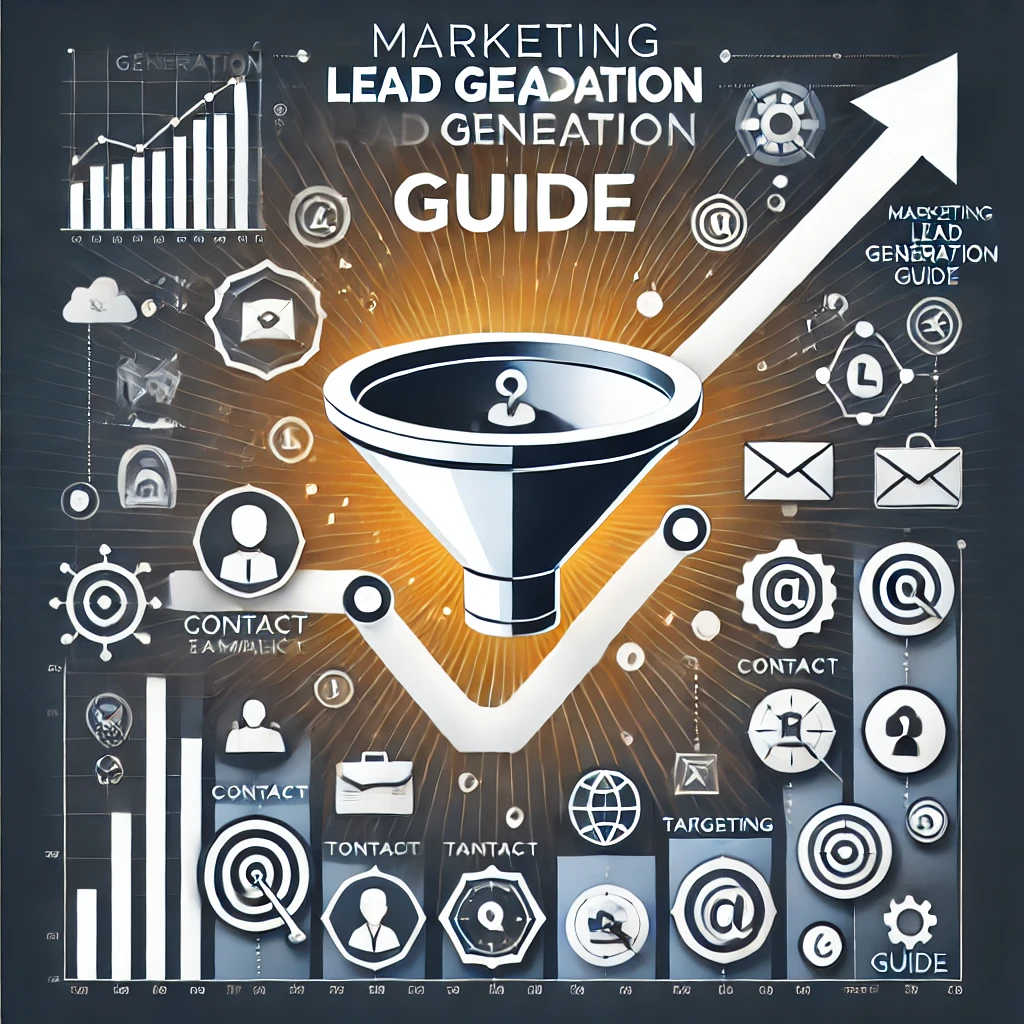Generating leads is a crucial component of any successful marketing strategy, helping businesses attract potential customers and build a pipeline for sales growth. In today’s digital landscape, lead generation has evolved with advanced tools, targeted strategies, and data-driven approaches. This guide explores what marketing lead generation entails, effective strategies to consider, and the top tools for attracting and converting high-quality leads.
What is Marketing Lead Generation?
Marketing lead generation is the process of identifying and attracting individuals or businesses (leads) interested in a product or service. This can be achieved through a variety of online and offline channels, nurturing these leads to convert them into loyal customers.
Key Terms:
- Leads: Potential customers who have shown interest in your product or service.
- Lead Magnet: An incentive, such as an ebook or discount, offered to potential leads to encourage them to share their contact information.
- Conversion Funnel: The journey a lead follows, from initial interest to becoming a customer.
Importance of Lead Generation in Marketing
Effective lead generation provides multiple benefits for your business:
- Increased Sales Opportunities: More leads translate to more chances for conversions, fueling revenue growth.
- Audience Insights: Understanding lead behavior allows marketers to refine strategies and create tailored content.
- Brand Awareness: Lead generation campaigns often increase brand visibility, helping build credibility in your industry.
Proven Lead Generation Strategies
Here are some of the most effective strategies marketers can use to attract and convert leads:
1. Content Marketing
- Blogging: Regularly publishing informative articles helps attract organic traffic and demonstrates expertise in your industry.
- Ebooks and Whitepapers: Offering downloadable resources on specific topics can serve as a powerful lead magnet.
- Webinars: Hosting webinars allows you to engage with potential leads directly, offering valuable insights and capturing their contact information.
2. Email Marketing
- Newsletter Signups: Encourage users to subscribe to your email list with valuable content, such as exclusive insights or discounts.
- Drip Campaigns: Set up automated emails to nurture leads over time, guiding them through the buyer’s journey.
3. Social Media Marketing
- Targeted Ads: Platforms like Facebook and LinkedIn allow precise audience targeting based on interests, location, or demographics.
- Contests and Giveaways: Offering incentives for engagement and email sign-ups can generate leads while increasing brand visibility.
4. Search Engine Optimization (SEO)
- Organic Search Traffic: Optimize website content with relevant keywords to attract potential leads searching for related information.
- Local SEO: For businesses with physical locations, targeting local keywords can help attract nearby leads.
5. Pay-Per-Click (PPC) Advertising
- Google Ads: PPC ads on Google can generate targeted traffic quickly, attracting leads actively searching for products or services.
- Retargeting Ads: Display ads to users who have previously visited your site, encouraging them to return and take action.
Essential Lead Generation Tools
Using the right tools can streamline and enhance your lead generation efforts:
- CRM Systems (e.g., HubSpot, Salesforce): Organize and track lead information and interactions for better conversions.
- Email Marketing Platforms (e.g., Mailchimp, Constant Contact): Automate email campaigns and segment lists based on user behavior.
- Landing Page Builders (e.g., Unbounce, Instapage): Create optimized landing pages to convert visitors into leads.
- Lead Capture Tools (e.g., OptinMonster, Sumo): Use pop-ups and forms to capture leads across different pages of your website.
- Social Media Management (e.g., Hootsuite, Buffer): Schedule and monitor social media campaigns to attract and engage leads.
Best Practices for Successful Lead Generation
- Offer Value: Use valuable content and incentives to attract leads, such as ebooks, discounts, or free trials.
- Create Engaging Landing Pages: Design landing pages that are clear, concise, and focused on a single call-to-action (CTA).
- Nurture Leads with Personalization: Tailor emails, ads, and follow-ups based on the lead’s behavior and preferences.
- A/B Test Campaigns: Test variations of landing pages, email subject lines, and CTAs to optimize performance.
- Measure and Refine: Use analytics to track lead sources and campaign success, refining strategies based on data insights.
Lead Scoring and Qualifying Leads
Lead scoring is the process of assigning a value to each lead based on their likelihood of converting. Factors can include the lead’s engagement level, demographics, and interactions with your brand. Qualifying leads ensures your sales team focuses on high-potential prospects, improving the efficiency of your pipeline.

Lead Scoring Factors:
- Engagement with Content: Higher scores for leads who download resources, attend webinars, or engage with emails.
- Demographics: Prioritize leads that match your target customer profile.
- Time on Site: Leads who spend more time on your website are often more interested and likely to convert.
Conclusion
Lead Scout is essential for building a sustainable sales pipeline. By implementing effective strategies, using the right tools, and following best practices, you can attract and nurture high-quality leads that align with your business goals. Understanding the fundamentals of lead generation can enhance your marketing impact and drive growth.



















Leave a Reply